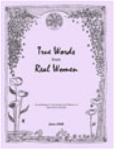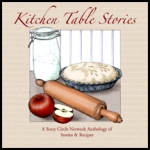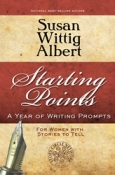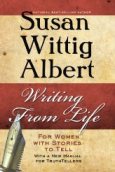By Susan Schoch
Mary Amaryllis is something of a friend to me, though it’s a one-sided relationship. I have come to know and appreciate her, but she had only the glimmer of a future connection with a reader to help her imagine me.
Mary Amaryllis kept journals from 1861 to 1879, beginning on her thirteenth birthday, and through enormous changes and challenges, and over many miles, preserved those journals into her old age. She went through them with an editorial eye when she was in her 70s, making notes in the margins, clearly envisioning that one day they would be read. There are 1700 transcribed pages waiting, perhaps with some of Mary’s impatience, to give her voice again. A rather distant cousin did the Herculean task of reading the tiny script and carefully reproducing it on the computer. I believe that she and I are the only people who have read every word that Mary Amaryllis saved for us, her unknown audience. It’s become my task, and my honor, to edit those words into a book, without altering the character, tone, or intent of that remarkable young woman.
I can just see Molly (as she was often called by family and old friends) curling up with a scrap of paper and a pencil under an appealing tree in the southern Ohio countryside. She was a great one for long rambles to visit friends and family, and liked to keep a record of them. Often, she would later rewrite stories and events in pen and ink in her faithful journal, and sometimes published them as she matured. She also wrote lots of letters and notes, and enjoyed the essay assignments at school. From the very first entry, she had me charmed.
“Home in the Country. Rome Tp., Athens Co., O.
Sunday, May 12, 1861
I am quite too young to write a worthy dedication for the record of my life which I propose to keep from this time thence-forth upon the clear pages of this handsome book, so I will leave such things to older and wiser heads, and begin on this, my thirteenth birth-day, a simple jotting down of the small events of my back-woods life, which seem to me, with my rustic training, great ones. My father is by trade, a blacksmith, but at present is “carrying on” a small farm, upon the Marietta and Cincinnati Rail-road two miles from the handsome little village of New England.”
Molly’s parents valued education, and she did well in school. She was a bright light in her small village, a talented singer and dancer, popular and full of fun, happy to be in the spotlight, definitely flirtatious, and a loyal friend. There are countless mentions of Sunday evening singing schools, and spontaneous late nights of dance and music at home, whenever a friend came by with an instrument. She mentions, too, sitting up with dying family and friends, and caring for younger siblings and neighbors.
As a teenager she was typically self-absorbed, even as she was affected by the traumas of the Civil War. The tedium and restrictions of war seemed to be as troubling for her as the losses. Until tragedy struck closer to home. Mary’s mother died when she was just 15. She had to bear much more responsibility at home, where there were still four younger children, one just a baby. Then her father remarried and the stepmother was a nag. By 17, Mary was charmed and pressured into marriage with a dashing young officer. That decision rapidly proved to be a disaster.
Mary Amaryllis did not, however, give up on anything easily, and through the rest of the War, and for some years after it, she was the mainstay of the marriage, running boarding houses and working as a seamstress, growing as much food as she could, and enduring often-miserable living conditions, illness, awful bouts of homesickness, and her husband’s errant ways. She had a baby. Her sister often came to help. The family kept moving, from the post-War rebuilding of Chattanooga to the booming oil fields of West Virginia, from coal-mining towns to rural isolation. At each place, they made a fresh start and her ne’er-do-well but handsome husband brought them down.
Then he was killed in a construction accident. Their little girl was still a toddler. There is a year missing in the journals, and a silence that surrounds this event all through the rest of her writing. Did she journal during that time? Did she later discard the writing of that year, as too private, or too painful? Certainly she was changed. Mary Amaryllis came out of that loss determined to do more than just survive, and intent on transforming herself into the woman she wanted to be.
How she did that is wonderful to discover in her journals. Starting life over as a widowed seamstress in a shirt factory in Chicago, she worked and studied hard, overcame tremendous challenges, and saw history made. Happily, the ending of her saga is a good one. And having traveled those years with her as her editor, she has won my affection and admiration through the strength of her words. I find myself devoted to helping her achieve her real ambition – publication. This will likely be an unpaid effort, but there will be enduring compensation nonetheless. It feels right to help Mary Amaryllis tell her story. Her struggle to raise herself up in life, to gain independence and to achieve the love and lifestyle that she longed for, her persistence, strength, creativity, political and social concern, and even her vanity, all are still relevant to women 150 years later. By employing some of that same perseverance, her personal yet emblematic life’s work may yet find many readers like me, who see themselves reflected in some way in her experience, and come to feel enthusiastically a friend to Mary Amaryllis.
The task of editing such historical documents carries much responsibility, and I am discovering resources that may be helpful to other writing women. One such is this book: Editing Historical Documents, (http://tinyurl.com/qcv55od), recommended by Giselle Roberts, author of A New Southern Woman: The Correspondence of Eliza Lucy Irion Neilson. Another is The Journal of American History, (http://www.journalofamericanhistory.org). If you have old family records, don’t hesitate. Mary Amaryllis is surely not the only one of our foremothers who is waiting to be heard.






